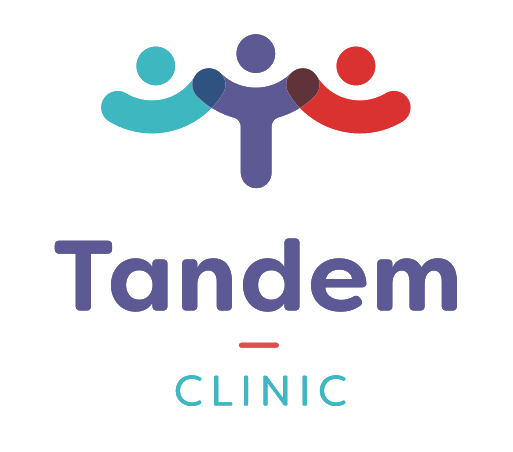Getting Your Rear In Gear - During Cancer Treatment
After a cancer diagnosis, it’s common for exercise habits to drop on the daily priorities list. For those experiencing fatigue, pain, anxiety or schedule overwhelm, “exertion” is the last thing a patient may want to think about. However, studies actually show that those who can maintain or improve their exercise habits, tend to have better quality of life, a need for less medication and a lower risk for complications from cancer and cancer treatment. Multiple studies, looking at physical activity after a cancer diagnosis, are also demonstrating a decreased risk for cancer recurrence and an improved survival benefit after a cancer diagnosis. Meanwhile, research has found no harmful effects from moderate and safe exercise habits among cancer patients.
“…Patients who exercise regularly have had 40-50% less fatigue, the primary complaint during cancer treatment.”
-NCCN, Exercising During Cancer Treatment –
“Four observational studies have now reported decreased total mortality among physically active women with breast cancer; the two largest have also reported decreased breast cancer specific mortality.”
-Ogunleye and Holmes (2009) Breast Cancer Res. 11(5):106. -
“Engaging in physical activity after a cancer diagnosis is associated with better survival among men.”
-Lee et al (2014) Physical activity and survival after cancer diagnosis in men. J Phys Act Health. Jan;11(1):85-90 -
Exercise is considered safe for people with cancer both during active treatment and after treatment. However, an assessment evaluating comorbidities, treatment and anything that might affect a person’s ability to safely engage in physical activity is needed to ensure safe exercise conditions. Sometimes, pre-exercise testing is also recommended. It won’t do you any good to get an injury or become discouraged and then possibly unable to exercise from starting too fast or to intensely with a new exercise goal. First, talk with your healthcare provider and create a safe and appropriate exercise goal or plan.
Regular physical activity has long been associated with increased life-expectancy, even at low levels of intensity and duration. At minimum, it is advised to avoid inactivity. Significant benefit is seen when patients become physically active before treatment or during treatment and as soon as possible after a diagnosis. Any level of activity, even gentle activity for short periods of time, will offer some health benefits. Most medical advisories and guidelines suggest 30 minutes of exercise at least 5 days per week (or a total 150 minutes+) to gain substantial health benefits. But it’s important to start at a level of intensity and duration that is safe and appropriate for you as an individual. Your health history, treatment, other medical conditions, medications and personal goals need to be considered.
Make it enjoyable, safe and attainable!
If you need to start with restorative exercise that’s ok! This could include breathing exercises, walking, tai chi, gentle yoga, dancing or swimming. Tai Chi for example, is a very gentle form of aerobic exercise that can be done at home or in nature. A 2016 study concluded that “Tai Chi was an effective intervention for managing cancer-related fatigue in patients with lung cancer undergoing chemotherapy, especially for decreasing general fatigue and physical fatigue, and increasing vigor.”
If you are already exercising at a higher level, keep going! In a study of more than 1400 men with early stage prostate cancer, men who walked briskly for at least 3 hours a week, were 57% less likely to have their cancer progress than those who walked less often and less vigorously. The conclusion of the study was that “…brisk walking after diagnosis may inhibit or delay prostate cancer progression among men diagnosed with clinically localized prostate cancer.” Talk to your healthcare providers about incorporating both aerobic and resistance or strength training into your exercise program. Aim to include exercises that target your large muscle groups, such as your thighs, chest, back and abdomen. It possible to gain muscle mass and strength during cancer treatment. Increased muscle mass is also associated with improved responses to cancer treatment. Of course, any exercise regimen needs to be supported with appropriate nutritional wellness, hydration, rest, blood sugar control etc.
Dr. Moore’s Top 5 Tips and Tricks for Maintaining Activity During Cancer Treatment:
Exercise at a time of day when you have the most energy and feel the strongest.
Get an accountability buddy – a friend or family member that can either encourage you to maintain your goal or go with you to ensure you complete the goal. Friends and family often want to help but don’t know what to do. This will help you and likely make them feel needed and helpful too!
Make it enjoyable by listening to music, being in nature or bringing a friend, pet or family member for company.
Stay present and thank your body for the activity and adventure it allowed you to do on that particular day. Then marvel and be grateful for the adaptation and improvement you may see with ongoing physical activity. Gratitude is a powerful reinforcer for empowering healthy choices and maintain healthy habits.
If you find you are time limited, add it to your daily activities
Do some stretching while you watch television*
Park your car farther from the building entrance to add in some extra steps*
Take the stairs instead of the elevator*
In Good Health,
Dr. Jessica Moore, ND
Dr. Jessica Moore, ND is one of Canada’s only hospital and residency trained naturopathic doctors and maintains a focused practice in integrative and naturopathic cancer care.
Call Tandem Clinic at 604 670 0590 or schedule online here
*The content of this article is not a substitute for personal and professional medical advise, diagnosis or treatment. Physical activity should be assessed by a healthcare professional. Consult with your healthcare provider for a proper assessment of your exercise needs and safety.
References:
www.nccn.org/patients/resources/life_with_cancer/exercise.aspx
www.cancernetwork.com/ons/men-open-starting-physical-activity-prior-prostate-cancer-treatment
www.cancernetwork.com/ons/men-open-starting-physical-activity-prior-prostate-cancer-treatment
current-oncology.com/index.php/oncology/article/view/3376/2372



